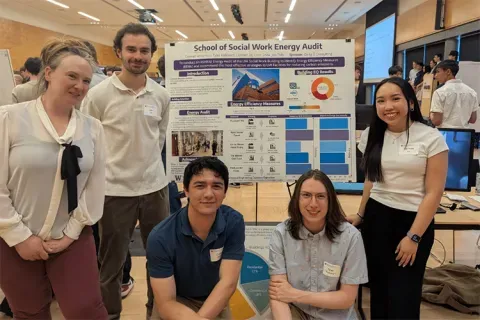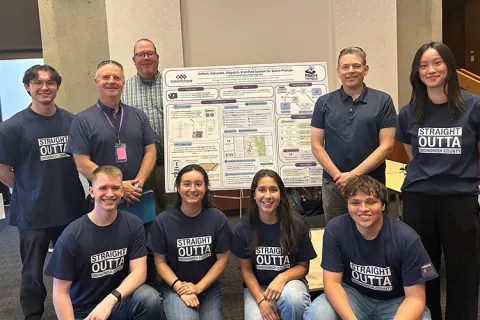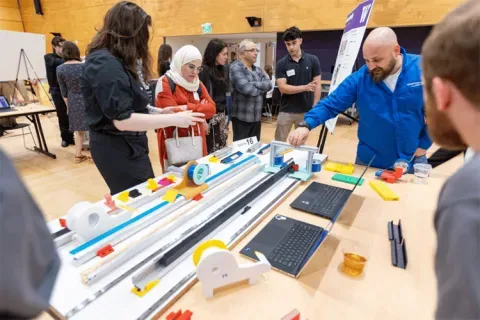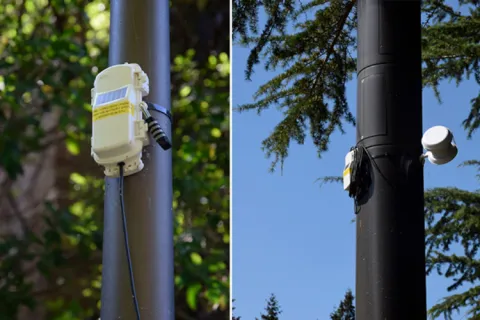UW Applied Physics Laboratory (APL)
Machine Learning for Community-Driven Coastal Erosion Monitoring and Management
The north shore of Willapa Bay in Washington is heavily impacted by climate change, with decades of erosion threatening the local infrastructure, natural habitats, Shoalwater Bay Indian Tribe's lands, and the economy. To combat this, a dynamic cobble revetment, mimicking natural Pacific Northwest coastal defenses and adaptable to sea-level rise, was installed at North Cove. The community also set up photo stations to engage locals in documenting these changes through MyCoast, an online platform. While tools like CoastSnap can measure beach width, they cannot track key metrics like cobble coverage, which is critical for monitoring sand storage and erosion, especially after storms. Machine learning offers a solution by enabling image segmentation (water, sand, cobble, etc.), allowing for more detailed analyses of seasonal changes. These community-sourced images, analyzed via ML, can be validated against WA Ecology's seasonal RTK-GPS surveys, offering higher-frequency data to track shoreline dynamics. In this project, students will work toward the development of an image analysis tool that can segment images based on substrate types (sea, sand, cobbles, etc.) from various smartphone sources, regardless of the model or year. The solution must function across two specified field sites and be adaptable for future use at other coastal locations. Performance Criteria: -Compatibility: The tool must handle images from a wide range of smartphones and be consistent across different image qualities and lighting conditions. -Segmentation Accuracy: The segmentation algorithm should differentiate between the various substrate types with high precision, even in challenging conditions such as varying light, tide, and storm events. -Generality: The segmentation method should be generalizable to other coastal environments, not just the two selected field sites. -Community Feedback: The development process must incorporate community input through intermediate presentations, ensuring alignment with user needs. -Science Integration: If time permits, the tool will also address scientific questions about changes in the coastline, such as the impact of storms or seasonal shifts, through analysis of image sequences. All final products, including the code, will be publicly available on GitHub, fully documented for ease of use and replication. Outcomes: -Development of a machine learning algorithm capable of segmenting beach imagery by substrate type (e.g. ocean, sand, cobble, vegetation). -An open-source (GitHub shared) codebase that implements this algorithm, accessible for further research and community use. -Automatically generated figures and plots that have been refined through collaboration with PIs and community members, providing real-time insights when new imagery is submitted. -A list of future research questions that can be explored using the data generated by the project. -Optional: Initial exploration of one or more of these research questions, if time permits.
Faculty Adviser(s)
Arindam Das, Electrical & Computer Engineering
Related News

Mon, 10/13/2025 | UW Mechanical Engineering
Capstone collaboration leads to award
An ME capstone team received first place for its energy audit of the UW School of Social Work building.

Thu, 07/17/2025
UW engineering students develop smart ballot solution
UW engineering students develop smart technology solution to improve ballot collection for Snohomish County.

Mon, 07/07/2025 | UW Mechanical Engineering
Capstone creations
Students displayed innovative capstone design projects at the 2025 expo.

Fri, 09/20/2024 | UW Civil & Environmental Engineering
Smarter irrigation for a greener UW
A new project combines satellite data with ground sensors to conserve water and create a more sustainable campus environment.